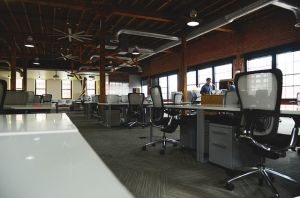 Co-working centres could become mainstream more quickly than many managers realise.
Co-working centres could become mainstream more quickly than many managers realise.
If you have always thought that co-working centres were only useful for independent professionals – writers, journalists or small business owners with a staff of one – then think again.
A growing number of corporates are starting to use co-working centres as their main office.
I spoke with Brad Krauskopf—CEO and Founder of Hub Australia—last week in Melbourne and he said "We have several corporates using the hubs. Technology has enabled people to choose where they work and there is a huge demand for that flexibility."
One of those corporate businesses is Do it on the Roof, a company that creates gardens on roofs and walls.
CEO Shelley Meagher said that basing her business out of Hub Melbourne has not only reduced business costs but also provided a dynamic and high-energy working environment for her team of seven office-based staff.
"My business has grown to the point where we could afford our own office but I am in two minds about leaving because there are so many benefits to being here".
Another corporate at Hub Melbourne is Clearpoint Counsel, a seven-person legal firm. Joel Cranshaw, Founder and Managing Director, believes the hub has given his business flexibility and community.
"Collaborating with a community of individuals and small businesses has helped shape our direction and kept us abreast of developments in the start-up community."
The common thread in these comments is that the value of co-working centres is not just about the office facilities but the connections and relationships that happen in that environment. It may seem an unusual tactic, but for managers struggling to find good people, co-working could increase not only the size of their network, but also their recruitment possibilities.
Managers often believe that their staff would be less productive if they work remotely, away from other team members. However, for some staff members a co-working centre could enable a work style that is most productive for them.
Karen Bond , Principal at NewportNet—a flexible work space located in the Northern Beaches of Sydney—agrees, saying "Research shows that most employees are more productive when they are given back some control of their work day: there are less sick days taken, less smoko breaks, less stress from traffic and the list goes on."
Indeed, the evidence weighs against concerns about productivity. One example is a two-year study of flexibility in seven large UK-based companies, which found that most flexible workers—as well as their colleagues and managers—rated their work as good as, or better than, when they worked traditionally. They were also more committed than their peers to their organisation.
Managers on the hunt for a co-working centre may need to keep in mind that not every co-working centre is set up to house businesses with larger teams.
Karen advises "You need to shop around for the right fit: some co-working and smart work spaces have dedicated offices of all sizes to cater for larger teams of employees from the one company so they can knuckle down and get the job done but still have the social benefit of mixing with other like-minded co-workers around the water cooler."
However, with over 100 co-working centres and incubators nationally and around half (46 per cent) considering opening another new location or expanding their existing location, the chances of finding what you're looking for are growing.
Interestingly, Australia has been at the forefront of the growth of co-working spaces, behind only the United States, Germany and the UK.
It seems that the co-working trend has more to offer than many managers realise. If you're interested to find out more about co-working, Third Spaces Group and local partners are hosting an Australian Co-working Conference in Sydney from 4-5 June.
Nina Sochon
Nina Sochon is a leading expert on remote and flexible work in Australia and a High Performing Workplaces Consultant. Nina now assists businesses to drive amazing service outcomes and powerful staff engagement through a clear system of results management, effective leadership and highly productive remote and virtual work arrangements.


